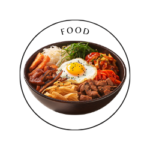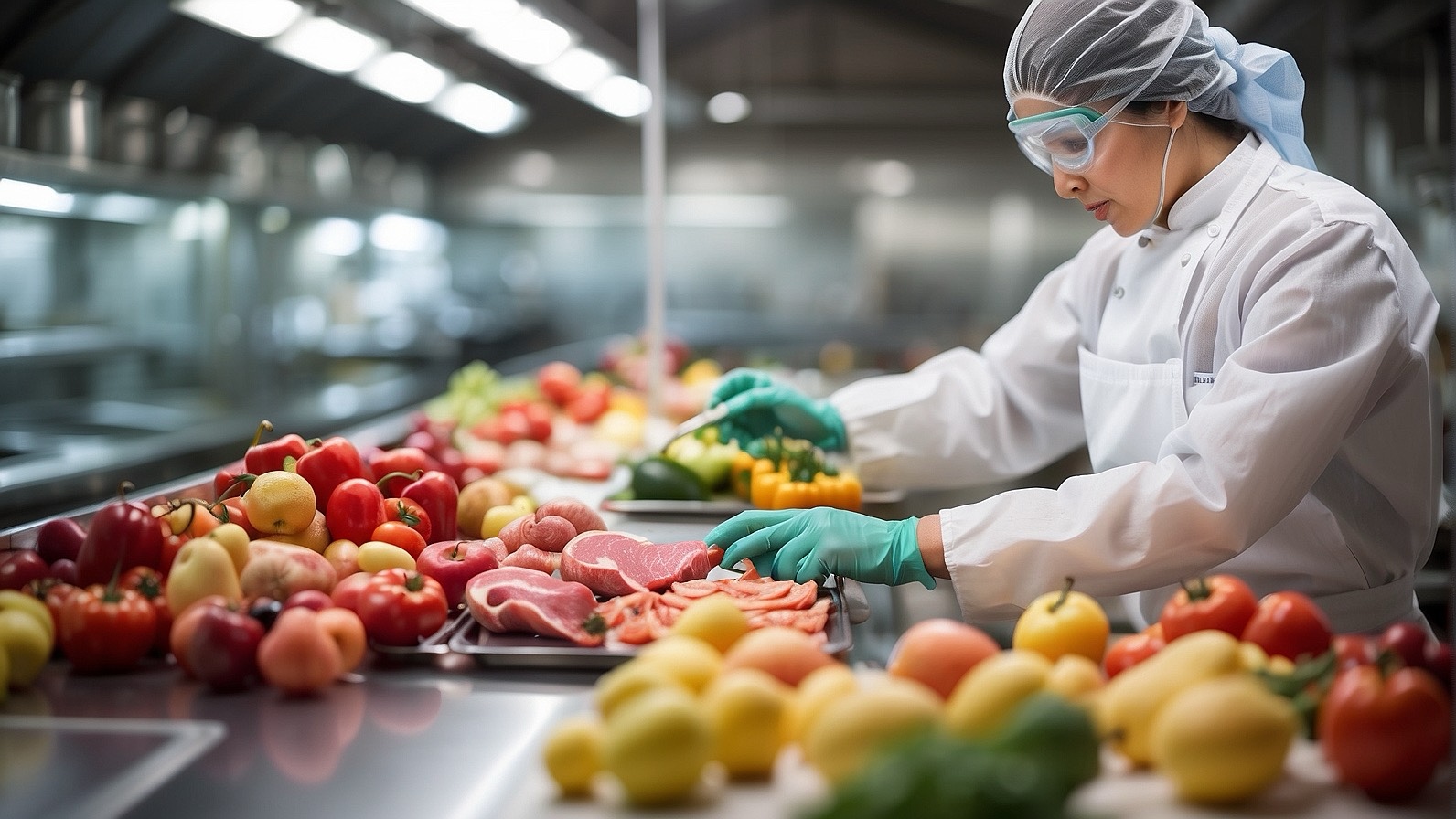 Mind
Mind
- Digital and Modern Well-being
- Mental Health and Emotional Well-being
- Mind-Body Connection and Holistic Health
- Parenting and Family
- Personal Growth and Development
- Relationships and Social Well-being
- Stress and Relaxation
- Therapeutic and Creative Practices
- Trauma and Recovery
- Work, Productivity, and Discipline
 Body
Body
 Fitness
Fitness
 Food
Food
 Beauty
Beauty
Food Safety and Handling

Food Safety and Handling: Essential Tips for Keeping Your Meals Safe
Whether you’re preparing a simple salad or a complex feast, ensuring that your food is safe to eat is a critical part of cooking. Foodborne illnesses can occur due to improper handling, storage, or preparation of food, which can lead to serious health problems. In this guide, we’ll explore the key principles of food safety and handling to help you reduce the risk of contamination and keep your meals healthy and delicious.
1. Why Is Food Safety Important?
Food safety is essential because it prevents foodborne illnesses, which can range from mild stomach upsets to severe cases requiring hospitalization. Each year, millions of people suffer from foodborne illnesses, caused by bacteria, viruses, parasites, or toxins that contaminate food. Following proper food safety practices can reduce the risk of these illnesses and ensure that what you’re serving is both safe and nutritious.
2. Key Principles of Food Safety
a. Cleanliness: Wash Your Hands and Surfaces
Maintaining cleanliness is one of the simplest but most crucial aspects of food safety.
- Wash your hands thoroughly with soap and warm water for at least 20 seconds before and after handling food, particularly raw meat, poultry, and seafood.
- Clean and disinfect cutting boards, utensils, and countertops regularly to prevent cross-contamination.
- Always wash fresh fruits and vegetables under running water to remove any potential pesticides or dirt.
b. Separation: Avoid Cross-Contamination
Cross-contamination occurs when harmful bacteria spread from one food to another, often through raw meat or contaminated surfaces.
- Keep raw meat, poultry, seafood, and their juices separate from ready-to-eat foods like salads, fruits, or breads.
- Use different cutting boards for raw meat and other ingredients to prevent the spread of bacteria.
- Store raw meat in sealed containers or on the lowest shelf in the refrigerator to prevent juices from dripping onto other foods.
c. Cooking: Achieve Safe Temperatures
Cooking food at the correct internal temperature is crucial for killing harmful bacteria.
- Cook meats and poultry to safe internal temperatures. Use a food thermometer to ensure that:
- Poultry (chicken and turkey) should reach at least 75°C (165°F).
- Ground meat should reach at least 70°C (160°F).
- Fish should be cooked to 63°C (145°F) or until the flesh is opaque and separates easily with a fork.
- Reheat leftovers to a temperature of at least 74°C (165°F) to ensure all bacteria are destroyed.
d. Chilling: Proper Food Storage
Proper storage helps to keep food safe by slowing down the growth of harmful bacteria.
- Refrigerate perishables within two hours of cooking or purchasing. If the temperature is above 32°C (90°F), refrigerate within one hour.
- Keep your fridge at or below 4°C (40°F) and your freezer at -18°C (0°F).
- Divide large portions of leftovers into smaller containers to cool them faster and store them safely.
- Never thaw food on the counter. Instead, thaw food in the refrigerator, under cold running water, or in the microwave if you plan to cook it immediately.
3. Special Considerations for Food Safety
a. Food Allergens
For those with food allergies, proper food handling is even more important. Cross-contamination with allergens can cause severe reactions.
- Be mindful of allergen-containing foods like nuts, dairy, shellfish, and gluten.
- Always read food labels and ask about ingredients when dining out or purchasing pre-packaged food.
b. Food Expiration Dates
Food labels provide important information about the freshness of your food. Knowing how to interpret expiration dates helps to reduce the risk of consuming spoiled or unsafe foods.
- “Use by” and “Best before” dates indicate the date after which a food item may no longer be safe or of good quality.
- “Sell by” dates are for store stocking purposes and don’t necessarily reflect the food’s safety.
4. Tips for Safe Food Handling at Home
a. Safe Shopping Habits
- When grocery shopping, pick up cold or frozen items last and place them in insulated bags to keep them cool on the way home.
- Avoid purchasing perishable food that is past its “use by” date or that looks damaged.
b. Handling Raw Meat and Poultry
- After handling raw meat, always wash your hands, utensils, and cutting boards with hot, soapy water.
- Marinate raw meat in the refrigerator, not on the counter, and never reuse the marinade unless it’s been boiled first.
c. Safe Leftovers
- Leftovers should be stored in airtight containers and consumed within 3–4 days.
- If in doubt, throw it out! It’s better to err on the side of caution when you’re unsure if food has spoiled.
5. Food Safety When Eating Out or Travelling
It’s not just at home where you need to be mindful of food safety. When eating out or travelling, it’s important to stay vigilant.
a. Eating Out
- Check the cleanliness of restaurants and whether they display food safety certificates.
- Avoid ordering undercooked foods like rare meat or raw eggs unless you trust the restaurant’s food safety practices.
- Send back any food that seems improperly cooked, has an unusual smell, or tastes off.
b. Travelling
- Drink bottled water if you are unsure of the local water quality.
- Avoid eating food from street vendors if you’re uncertain about hygiene standards.
- Choose freshly prepared hot foods, and avoid anything that looks like it’s been sitting out for too long.
6. Common Foodborne Illnesses and Symptoms
Foodborne illnesses can cause a range of symptoms, from mild discomfort to serious health issues. Here are some common pathogens that cause food poisoning:
- Salmonella: Often found in raw eggs, poultry, and unpasteurised dairy. Symptoms include fever, diarrhoea, and stomach cramps.
- E. coli: Common in undercooked ground beef or contaminated produce. Symptoms include severe stomach cramps, vomiting, and bloody diarrhoea.
- Listeria: Found in raw milk, soft cheeses, and deli meats. It’s especially dangerous for pregnant women and the elderly.
- Norovirus: A highly contagious virus that causes vomiting and diarrhoea, often spread through contaminated food or water.
If you experience severe symptoms like high fever, dehydration, prolonged vomiting or diarrhoea, seek medical attention immediately.
7. Conclusion
Food safety and proper handling are vital steps in keeping your kitchen and meals free from harmful bacteria and contaminants. By following these guidelines—cleaning, separating, cooking, and chilling food properly—you can drastically reduce the risk of foodborne illnesses and keep your family healthy. Always remember that safe food handling starts with a few simple precautions but can make a big difference in protecting your health.
